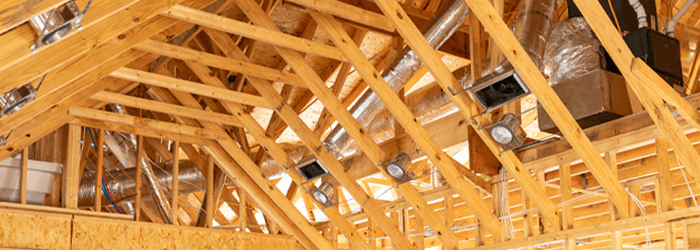It’s been a long, hot summer, and as we wipe our brow with gratitude that our AC unit made it through the summer with us, we must wonder, “what condition did this July leave our equipment in?”
 How hot has it been? Phoenix experienced the hottest summer on record! We had the most days over 110 in recorded history. In addition, we set records for one of the hottest July’s, with high temperatures averaging roughly 5 degrees warmer than usual.
How hot has it been? Phoenix experienced the hottest summer on record! We had the most days over 110 in recorded history. In addition, we set records for one of the hottest July’s, with high temperatures averaging roughly 5 degrees warmer than usual.
How does the climate affect our air conditioning units?
“Air conditioner systems in Phoenix, Arizona, take a beating”, says Todd Russo, owner of Reeis Air Conditioning. “We have one of the harshest environments in the country, as our temperatures reach 110-120 degrees.”
Expanded Content | Radio Broadcast Shorts Playlist
The desert climate puts heavy demands on our units because:
- Systems operate outside their intended outdoor design temperature for several months in a climate that is 110+. Our wide temperature variations put a significant demand on equipment as well.
- AC cooling systems are required to work twice as many months as in other places.
- Our dusty environment puts a lot of wear and tear on the unit; dust can be the number one enemy of efficiency and longevity.

These conditions, and many more, affect our system’s performance over time causing efficiencies to degrade which could cause a system failure. Other issues include higher bills, poorer air quality, and decreased comfort.
What are the driving indicators to consider a new system?
Your AC will tell you when to start thinking about purchasing a new one. If your system has difficulty keeping the house cool, needs a major repair or frequent repairs, or is driving a high utility bill, it may be time to consider your options. You could also look into a home energy audit to make sure your home is energy efficient.
Generally, systems should be replaced every 10-15 years, although we have seen units last 15-20 years.
What should homeowners be looking for in a new system?
- Quality of Installation | Proper installation by a qualified AC company is critical! The National Comfort Institute has performed studies showing that improperly installed systems reduce a unit’s cooling capacity by up to 58%. That is a loss of 42% in efficiency.
- Choose the right equipment for our desert climate | There are three types of cooling delivery systems: single-stage, two-stage, and the new inverter technology.
- Single-stage | Generally speaking, we don’t recommend a single-stage system as it often leads to choosing an oversized unit. Oversized equipment short cycles causing your home to be uncomfortable and your energy bills to be high.
- Two-stage | A two-stage unit allows a system to run at low and high stages. This diminishes the need for an oversized unit.
- Inverter or modulating | These systems deliver the exact amount of cooling your system needs based on its demand. Your home will be exponentially more comfortable, and your energy bills will be significantly lower.
If a homeowner meets the criteria described for a new system, what system is recommended?

Recently, Trane released a new product that Todd considers the best value in the industry. It is the Trane XV17. It is a price-conscious, fully modulating, smart air conditioner (or heat pump). The new inverter compressor has 75 air conditioning stages. This unit delivers maximum comfort and energy savings at a net price comparable to a base single-stage system.
What is the cost of a new system?
Todd tells us that Trane designed the system to qualify for all available rebates and priced it competitively. This unit is only available through premier, qualified dealers.
The cost of a new system varies by size and application. When Todd’s team at Reeis Air Conditioning performed a competitive price analysis, they found that basic, single-stage equipment is priced around $10,000 – $12,000. When they looked at air conditioners with the new modulating air conditioning or inverter technology, they found the typical price to be $19,000 to $25,000.
However, these units qualify for discounts and incentives of $5,500 to $6,000. The discounts bring the price close to that of basic, single-stage equipment.
- You can expect savings of $3,500 – $4,000 from utility companies. Several factors will determine this amount: Who is your utility provider (SRP or APS)? Will you finance the unit through Reeis Air Conditioning or pay by check or with credit card?
- In addition, a dollar-for-dollar tax credit of $2,000 is also available.
With rebates, net prices for the XV 17 run around $11,000 to $12,000.
NOTE: Pricing depends on the individual details and circumstances of the family lifestyle as well as the construction and orientation of the house.
What is the expected savings with a more efficient unit?
 Utility savings
Utility savings
Todd tells us that, compared to a +10-year-old system, a homeowner could see around $650 – $1080 in air conditioning utility savings. There can also be savings on the heating system. Over ten years, a Phoenix homeowner could see between $7,500 and $12,500 in utility savings.
Maintenance savings
It’s always recommended to perform regular maintenance like changing your air filter monthly. However, homeowners can expect to save several thousands of dollars in savings from needed repairs as their new system will be under warranty. Over the system’s lifetime, the unit will pay for itself, and you get to experience a much more comfortable home.
Before the heat is on in 2024, be sure to check out our podcast with REEis that details Getting Your AC Ready For Warm Weather.
###
CONTENT PARTNER | REEis Air Conditioning

REEis Air Conditioning is a family-owned & operated air conditioning & home performance contractor. Our entire focus is on delivering the best customer service without commissioned sales technicians. We focus on providing solutions to our clients which improve their homes’ comfort, indoor air quality, durability, and energy efficiency.
PODCAST
Excessive heat has put heavy demands on air conditioners. Especially if you have an older unit. Todd Russo of REEIS Air Conditioning discusses indicators to consider if you need a new system. What to look for in a new system and more recommendations on the types of units, efficiencies and potential savings.
Podcast Archive With Expanded Content and Resources
PHOTO CREDIT
- Trane
- REEis
- Shutterstock




















